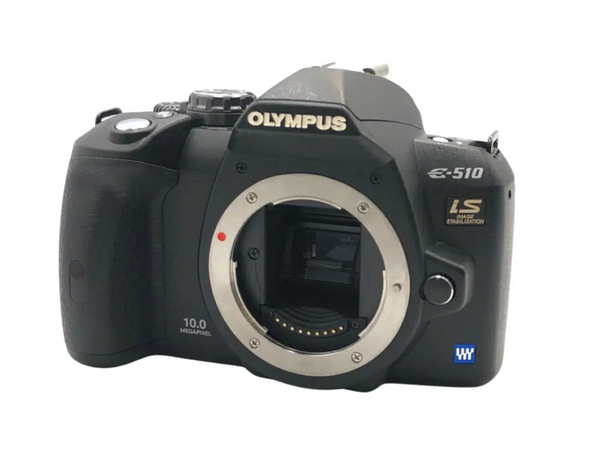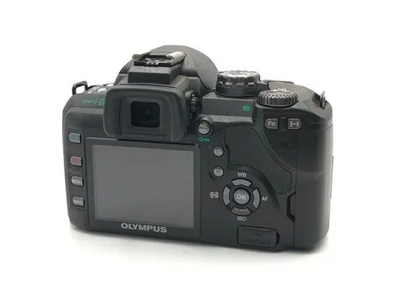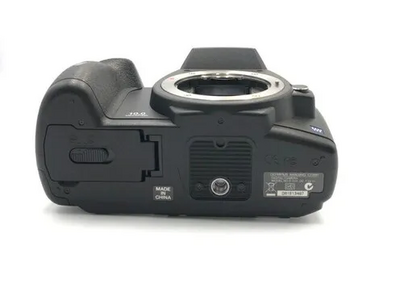
Olympus OM-D E-M1 Mark III
| Brand | Olympus 2020 |
| Model | OM-D E-M1 Mark III |
| Released Year | 2020 |
| Type | DSLR Cameras |
| Series | OM-D |
| Color | Black |
| Optical Zoom | NA |
| Status | Active |
Quick view
Overview
The Olympus OM-D E-M1 Mark III is a high-performance mirrorless camera featuring a 20.4MP Live MOS sensor and TruePic IX processor. It offers advanced autofocus capabilities with 121 cross-type phase-detection points for fast, accurate focusing. The camera supports 4K video recording at 30fps, ensuring quality video capture. Its five-axis in-body image stabilization enhances handheld shooting by compensating for camera shake. With weather-sealed construction, the E-M1 Mark III is durable and suitable for professional use in harsh conditions. It also includes features like Pro Capture mode and Live ND simulation to expand creative possibilities.
Specifications
| Maximum Aperture | NA |
| Digital Zoom | NA |
| Screen Size | NA |
| Color | Black |
| MPN | NA |
| Item Length | NA |
| Battery Type | NA |
| California Prop 65 Warning | NA |
| Series | NA |
| Type | NA |
| Manufacturer Warranty | NA |
| Maximum Resolution | NA |
| Item Height | NA |
| Model | NA |
| Country | Japan |
| Optical Zoom | NA |
| Connectivity | NA |
| Features | NA |
| Country/Region of Manufacture | NA |
| Item Width | NA |
| Item Weight | NA |
| UPC | NA |
Images
Key Advantages
The Olympus OM-D E-M1 Mark III is compact and lightweight, making it highly portable for photographers on the move. Its advanced autofocus system provides reliable focus tracking and face/eye detection, improving capture success. The 5-axis image stabilization significantly reduces blur caused by hand movements, enhancing image sharpness. Weather sealing ensures protection against dust and moisture, allowing outdoor and tough environment usage. The camera's 4K video capability meets professional video needs with clean output. Additionally, the Pro Capture mode helps catch decisive moments with buffer shooting before the shutter press.
Limitations
The 20.4MP resolution, while adequate, is lower than some competitors, potentially limiting large print quality. Battery life is moderate, requiring additional batteries for extended shooting sessions. The Micro Four Thirds sensor size can have limitations in low-light performance and depth of field control compared to larger sensors. Video recording does not support 4K at higher frame rates like 60fps for slow-motion capture. The menu system can be complex and overwhelming for beginners. Also, the absence of in-camera focus stacking and certain advanced video features may limit specific professional workflows.
FAQ
What sensor does the Olympus OM-D E-M1 Mark III use?
It uses a 20.4 megapixel Live MOS Micro Four Thirds sensor.
Does the OM-D E-M1 Mark III have image stabilization?
Yes, it features a 5-axis in-body image stabilization system.
Can the camera record 4K video?
Yes, it can record 4K video at up to 30 frames per second.
Is the OM-D E-M1 Mark III weather-sealed?
Yes, it has a robust weather-sealed magnesium alloy body.
What is the autofocus system like on this camera?
It uses a 121-point cross-type phase-detection autofocus system with face and eye detection.
How long does the battery last for shooting?
The battery life typically allows for around 420 shots per charge according to CIPA standards.
Is the OM-D E-M1 Mark III suitable for beginners?
While it offers advanced features, the menu system and operational complexity may be challenging for beginners.
Disclaimer
The content on is provided for general informational purposes only. We do not guarantee the accuracy, completeness, or reliability of any information, specifications, or visuals presented on the site.
is not responsible for any content, images, or data uploaded or shared by users. Users are solely responsible for the content they submit.
We may include links to third-party websites for convenience. We do not endorse or take responsibility for the content or policies of any external sites.
Use of the site is at your own risk. Always verify critical information independently before making decisions based on content from this website.



